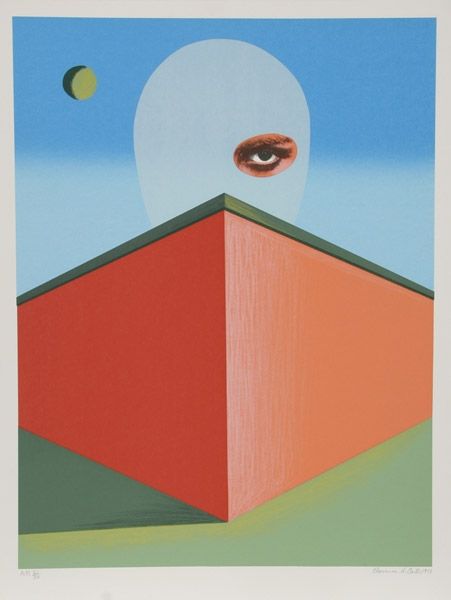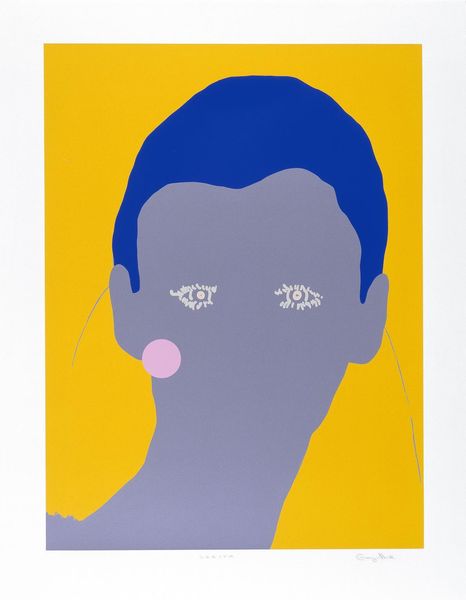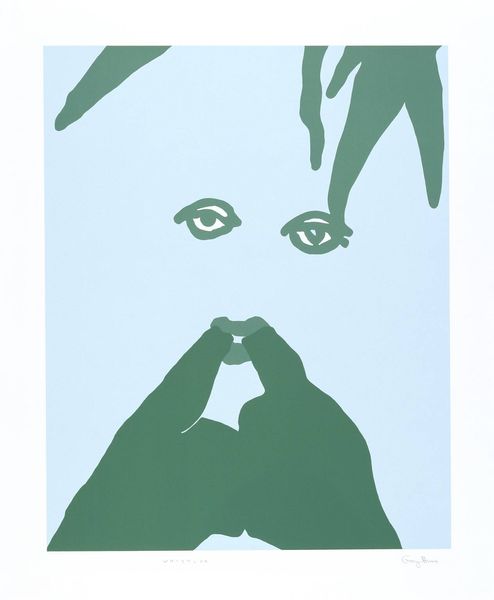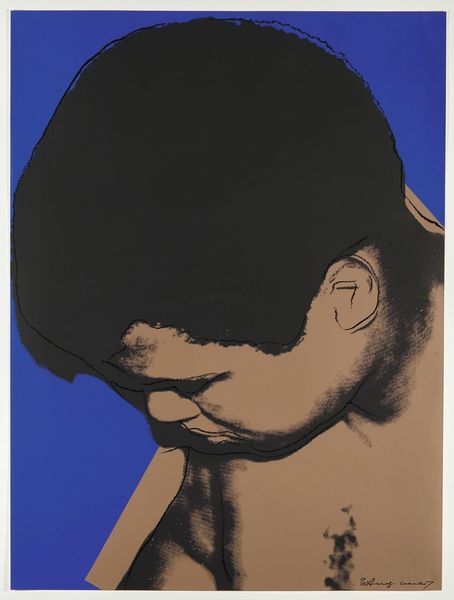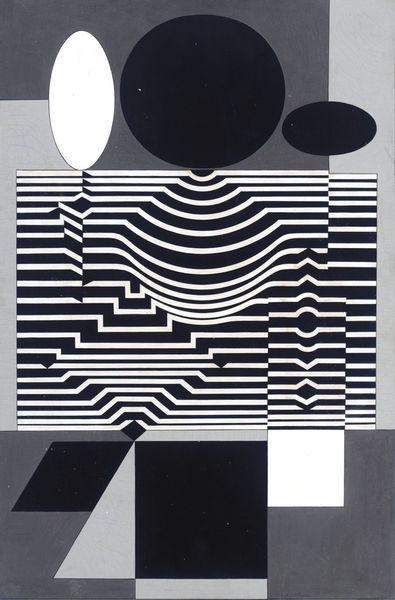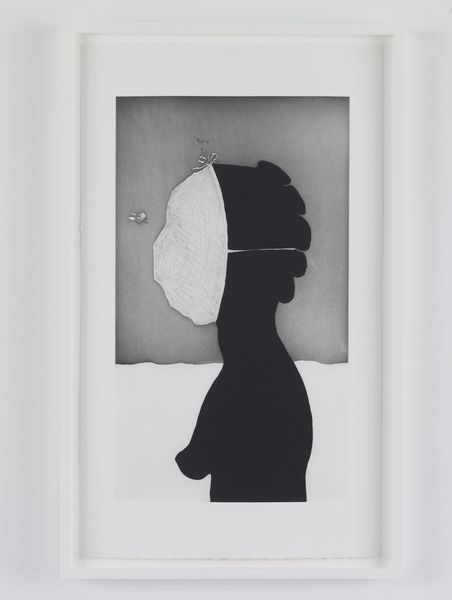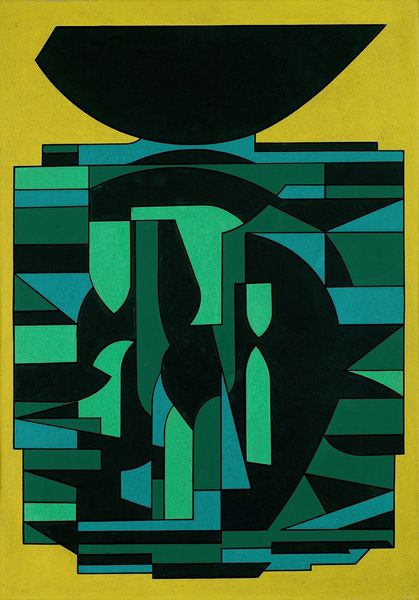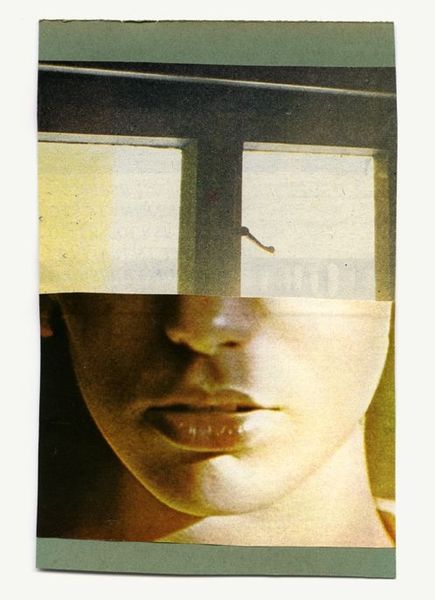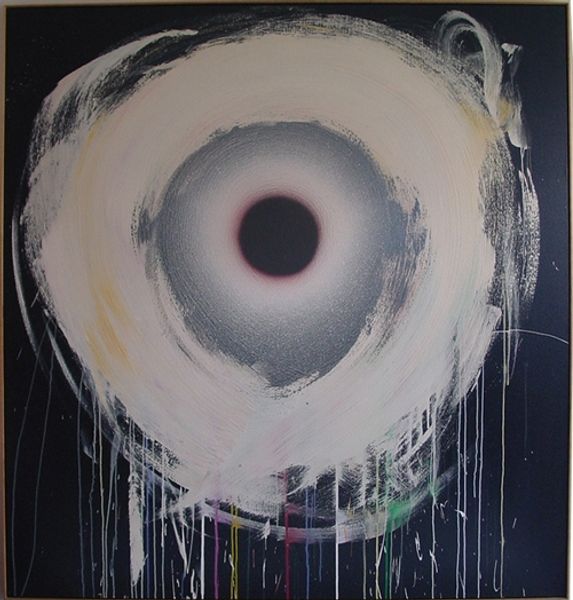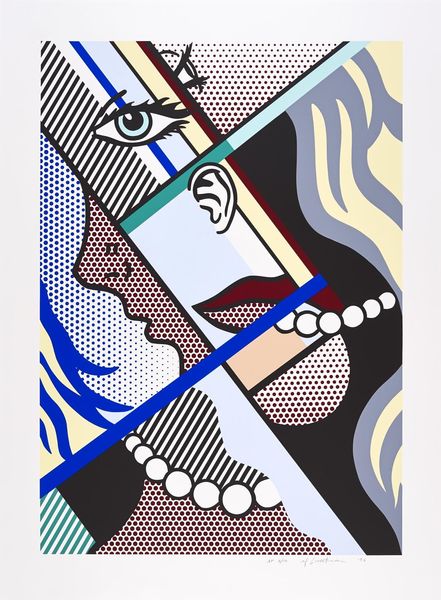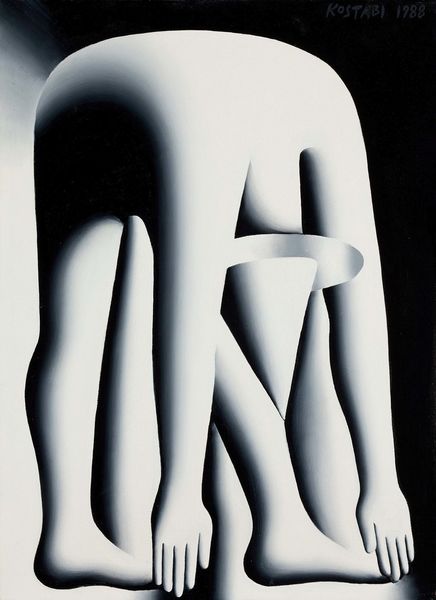
Copyright: Clarence Holbrook Carter,Fair Use
Curator: Initially, I find this image strikingly cold, like a dispassionate observer staring back at me. Editor: And yet, oddly serene, isn’t it? Like a minimalist moon landing with a rogue eye thrown in. It's spare, but compelling, like a poem with one really good line. Curator: Let's delve into it a little. What we're looking at here is Clarence Holbrook Carter’s “Balancing Act,” completed in 1976. Carter, notably linked to the Surrealist movement early in his career, explored diverse styles across his lifetime, from realism to abstraction. He engaged with prevailing anxieties of his era, themes like technological advancement and the individual versus society, through surreal symbolism. Editor: Technological advancement? Good point, it also reminds me a bit of the eerie tranquility of the future imagined in sci-fi novels of the '70s. This sense of alienation from society? The title, “Balancing Act,” maybe suggesting the tension between exposure and concealment, vulnerability and strength. It really is asking us, What does it take to hold steady in the world? Curator: Well put. The geometric clarity is classic Pop Art, a visual shorthand accessible in the '70s and which would have resonated then as something widely recognizable. Editor: It’s like, if Magritte designed a ski mask. Makes you question what is hiding beneath the surface—but perhaps the eye alone gives everything away. Exposing a whole narrative in just one glance! Curator: I agree, a lone eye invites readings on surveillance or awareness. A black-and-white portrait imposed upon this vibrant azure backdrop. So it would seem Carter found that our human, imperfect attributes stand out from these pristine environments. Editor: That solitary eye – an incredibly visceral, beautifully painted element smack in the middle of such pure geometric space! It does something, doesn't it? Gives all the cool surfaces and stark color this beating heart. Curator: Absolutely, this fusion – perhaps even clash – of graphic and figurative elements defines much of Carter's later work. It shows how societal systems intersect. Editor: It's not just observing but truly observing – that kind of concentrated, intent focus. It leaves one considering themselves a little harder. I didn't expect this! Curator: And that perhaps, is the point, our roles are intertwined and are on public display. Editor: A bit unsettlingly, I might add, yet lovely for that.
Comments
No comments
Be the first to comment and join the conversation on the ultimate creative platform.
